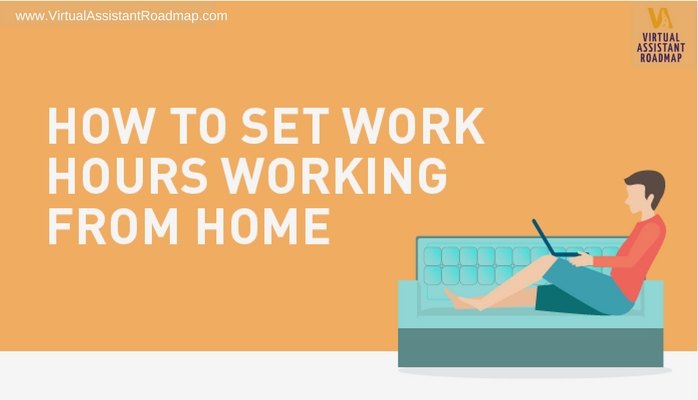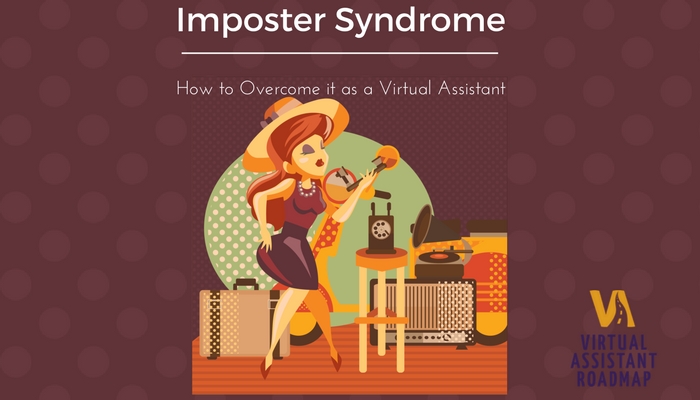The start of the school year is a natural fresh start in our calendars, regardless if you are sending children off to classes (or heading off to class yourself). It’s a time to shift gears from hopping aboard the boat at the lake to hitting the books. Back to school organization is just as important for virtual sssistants as it is for students.
Get ready to start the year strong with our back to school organization guide for virtual assistants.
-
Get Your Schedule Sorted Out
Students rely on a schedule to be where and when. Sure, virtual assistants may not have to report to geometry in room A203 anymore. But that doesn’t mean you shouldn’t follow a schedule.
 It’s the paradox of the virtual assistant life. You hold autonomy over your schedule, but you should use that autonomy to set restrictions. Ask any successful virtual assistant and they will tell you a schedule is key (not convinced? Check out this post on why you need to set your work hours when you work from home).
It’s the paradox of the virtual assistant life. You hold autonomy over your schedule, but you should use that autonomy to set restrictions. Ask any successful virtual assistant and they will tell you a schedule is key (not convinced? Check out this post on why you need to set your work hours when you work from home).
Take some time to develop a work schedule that will work for you. Maybe your peak productivity hours are early morning and late afternoon. Schedule your workout for the midday slump. Maybe at 3 you need to shuttle your kiddos around to after school activities. Start your workday a bit earlier. Making a schedule sets you up to be organized and ready to rock this year.
-
Stock Up on Supplies
Most stores host back to school sales for supplies like paper, pens, post-it notes, and even electronics. Conveniently, all tools you use to run your Virtual Assistant business! Take advantage of these sales and stock up on anything you will need throughout the year.
 If you are lucky enough to have a storage area, pack it to the brim with discount supplies. If you haven’t already, make sure your supplies are organized and easily accessible.
If you are lucky enough to have a storage area, pack it to the brim with discount supplies. If you haven’t already, make sure your supplies are organized and easily accessible.
-
Get Ready to Learn
Students everywhere are getting ready to learn and so should virtual assistants! Plan out a duoable learning schedule you can follow throughout the school year.
Maybe you take an online course through Udemy where you dedicate one hour Tuesday evenings to. Maybe it’s reading a business development book for twenty minutes a day (try this list of top books every Virtual Assistant should read). Always be learning. It’ll make you a better Virtual Assistant (and more well-rounded person).
-
Gather Up the Timelined Checklists
Checklists are a great organizational tool for virtual assistants. They help you remember those dozens of small tasks you need to do without letting something fall through the cracks. Checklists are a virtual assistant’s friend. At the start of the school year, collect ones you will rely on the following months.
Here are a few we recommend:
- Beginning of the Year Checklist
- Summer Slump Checklist
- End of Year Checklist
- Linkedin Personal Branding Daily, Weekly, Monthly, Quarterly Checklist
-
Test Out Productivity Hacks
 Productivity hacks are great for virtual assistants. They let you work smarter, not harder. Pick a few new productivity tricks to try out this school year. You can even pick a new trick each month to continually make yourself a more effective Virtual Assistant.
Productivity hacks are great for virtual assistants. They let you work smarter, not harder. Pick a few new productivity tricks to try out this school year. You can even pick a new trick each month to continually make yourself a more effective Virtual Assistant.
Here’s a round-up of some great tips to get you started:
- Streamline your business with these free tools
- Keep your to-do list short (a few items or less)
- Test out the pomodoro method of time management
- Try batching your tasks
- Plan your day the evening before
Use these organization tips to start your school year off right. Don’t forget, The Virtual Assistant Roadmap is always here to lend a helping hand. We can assist with any aspect of building your Virtual Assistant business. Let us help your company grow this school year. Reach out today with a quick email to get started.






 Imposter syndrome is a term often thrown around and splashed in click baiting headlines, leaving people confused as to what it actually is (and whether they’re affected by it).
Imposter syndrome is a term often thrown around and splashed in click baiting headlines, leaving people confused as to what it actually is (and whether they’re affected by it). Imposter syndrome is the little troll on our shoulder feeding us lies about our potential. It keeps us from being the best virtual assistant we can be. We hesitate to take our company in a new direction…because we’re the ones who must lead it there. At networking events, we keep to ourselves because we don’t think we can offer anything of value to potential connections. Our own lack of confidence can rub off on our employees, making it harder for them to be bold and daring.
Imposter syndrome is the little troll on our shoulder feeding us lies about our potential. It keeps us from being the best virtual assistant we can be. We hesitate to take our company in a new direction…because we’re the ones who must lead it there. At networking events, we keep to ourselves because we don’t think we can offer anything of value to potential connections. Our own lack of confidence can rub off on our employees, making it harder for them to be bold and daring. It’s okay to celebrate and take pride in your success. In fact, it’s important for your confidence’s sake to view your success accurately. (That means recognizing the role your ability and
It’s okay to celebrate and take pride in your success. In fact, it’s important for your confidence’s sake to view your success accurately. (That means recognizing the role your ability and  a list of more achievements to feel more confident. But, the problem with imposter syndrome isn’t a lack of success (since it happens with people who are very successful). It’s not being able to internalize accurately those successes. Imposter syndrome won’t go away with more success.
a list of more achievements to feel more confident. But, the problem with imposter syndrome isn’t a lack of success (since it happens with people who are very successful). It’s not being able to internalize accurately those successes. Imposter syndrome won’t go away with more success.